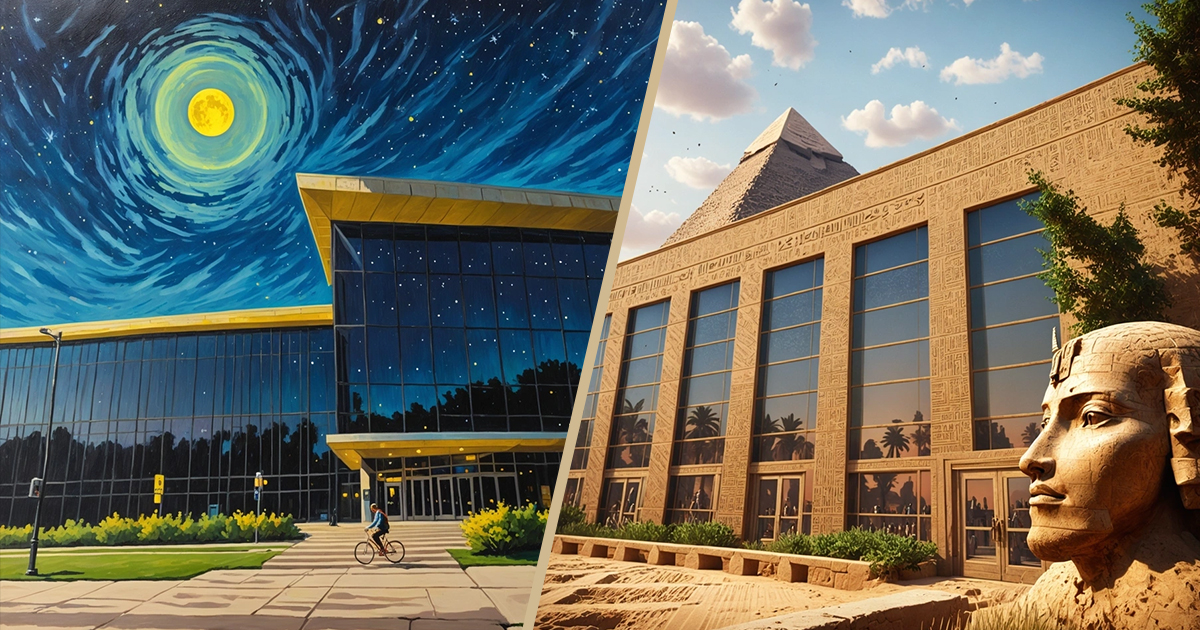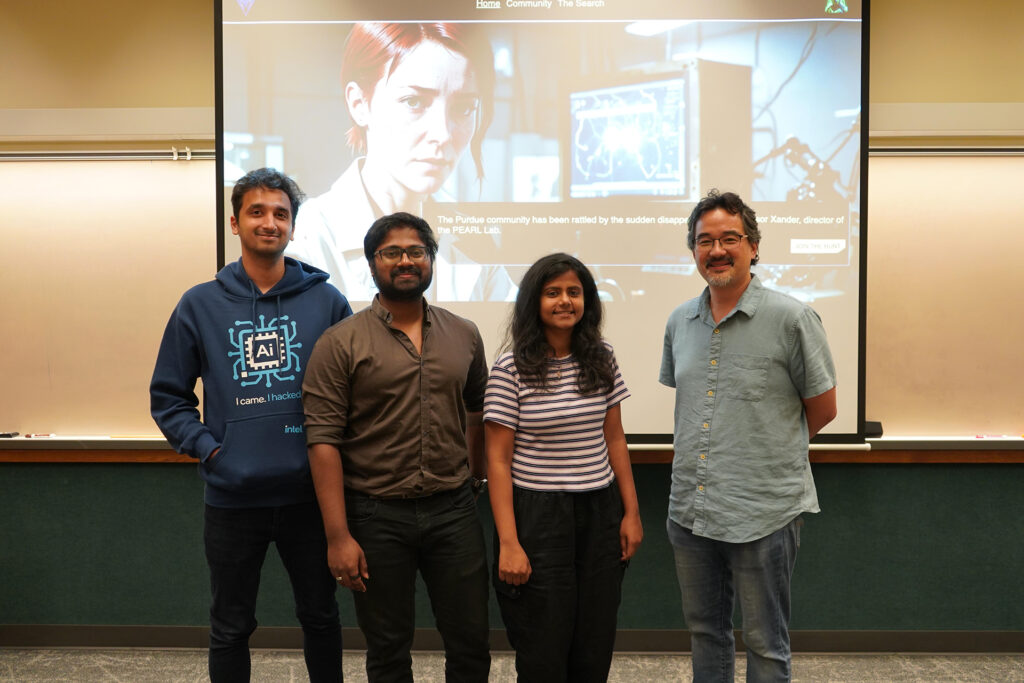Students design “a game about AI using AI”

A reimagined Purdue from the alternate reality game, TRAIL (Photos provided)
Education professor’s students launch new alternate reality game
A fictitious Purdue professor has disappeared – and you must use artificial intelligence (AI) in order to rescue her!

So goes the storyline behind an Alternate Reality Game (ARG) designed by a team of Purdue graduate students. Transforming AI for Learning (TRAIL) launched Oct. 14, in part to complement the upcoming Nov. 11 Purdue AI in P-12 Education Conference and the Nov. 14 inaugural Purdue/Google Summit, The AI Imperative: Uniting Education, Business and Government.
“TRAIL is sort of an online transmedia escape room, with a mystery around a narrative that you solve,” said Bill Watson, professor of learning design and technology in the College of Education. “As such there are digital components as well as physical – such as the missing Professor Xander’s office in YONG 431 and game merchandise and swag that participants can earn through playing the game and helping to solve the game community solve the mystery.”
Watson teaches, researches, directs the Purdue Center for Serious Games and Learning in Virtual Environments, heads the College of Education’s AI-Data Science Initiative, and is coordinating the upcoming Purdue AI in P-12 Education Conference.
Two Purdue Polytechnic students in Watson’s Educational Game Design (EDCI 556) course designed the game during the spring 2024 class, then were funded by Purdue Online to finalize development during the summer and fall. Hassaan Waqar and Ivy Abraham are both master’s students in CGT UX Design in the Purdue Polytechnic Institute (PPI). Kireet, a master’s student in PPI’s CGT Games program, developed the website for desktop and laptop computers that the ARG runs on.
In TRAIL, game participants learn about AI via the game and actually use AI tools while solving the mystery. Besides being fun, the game is also designed to educate participants about AI and involve them on envisioning the future of AI at Purdue.
“The objective was to engage students in exploring AI and its potential within education and beyond through a hands-on approach,” Abraham said. “We went with the concept of an Alternate Reality Game, which revolves around a cohesive narrative that combines digital elements with physical artifacts and involves player participation for game progression.”
“Our approach involves an overarching mystery-driven narrative, along with an educational game embedded within the levels of the game,” Waqar said. “Within the narrative, we incorporated references to physical locations on the Purdue-West Lafayette campus where participants can visit to gather more information and clues about the game.”
The entire game is essentially a fun way of learning about all different aspects of AI. In each game level the student developers wanted to expose participants to different AI aspects and concepts, especially those related to education. The later levels are designed to expose participants to the ethical concerns of AI.
“Educational games provide an engaging way to learn, and integrating an ARG elevates the experience through its multimodal nature,” said Abraham. “Our goal was to make learning enjoyable, and this game is designed with that in mind.”
“The entire design of the game itself serves as a powerful example of how AI can play a pivotal role in educational projects by boosting creativity, team performance, and output,” Waqar said. “We leveraged AI extensively throughout the project itself and this was a design decision that we made: a game about AI using AI.”




A reimagined Purdue from the alternate reality game, TRAIL (Photos provided)
The student developers said they learned a lot about AI and machine learning and the current trends of AI in education through their research for the game. “A lot of the possibilities and scenarios mentioned in the game are from a perspective of looking into the future,” said Abraham. “For the narrative we tried to extrapolate the current use of AI in education and universities in general. To do this effectively we had to do our fair share of extensive research which was fun.”
After launching the game in mid-October, their next steps include:
- Monitor player/student progress and engagement.
- Understand how the game has helped participants learn more about AI and its potential.
- Monitor the progression of the game to learn educational game design lessons about what worked and what did not.
They will also hold an Oct. 24 workshop, From Sketch to Design with AI, as part of the game for participants to create their own vision of AI within their educational field and use AI tools to convert their initial sketches or ideas into fully rendered designs. The workshop will be held in Lynn Hall of Veterinary Medicine 1136 from 7:00 to 9:00 p.m. Register at https://bit.ly/TRAIL-workshop.
In addition to overseeing his student developers on the project, Watson envisions writing several research articles about the game’s development, launch, and use.
As for the game, does the professor get rescued? You’ll have to play the game to find out – and have fun as you learn more about AI in education. Start your adventure on your desktop or laptop computer here or see if there are any clues in Professor Xander’s office in YONG 431!
Sources: Bill Watson, brwatson@purdue.edu, Ivy Abraham, abraha65@purdue.edu; Hassaan Waqar, hwaqar@purdue.edu
To learn more about AI and ARG at Purdue, register for:
- TRAIL “From Sketch to Design” Workshop (Oct. 24)
- Purdue AI in P-12 Education Conference (Nov. 11)
- The AI Imperative: Uniting Education, Business and Government summit (Nov. 14)
More info: The College of Education’s AI and Data Science Initiative